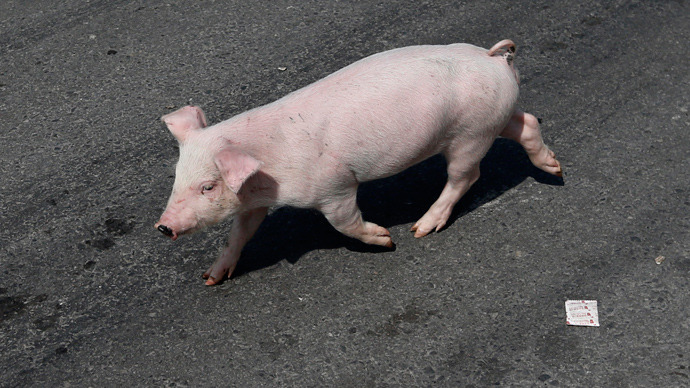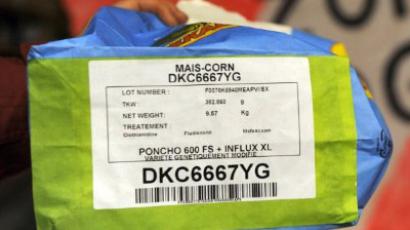British ‘Pig 26’ in drive to create disease-resistant GM animals

Scientists at the Roslin Institute, the birthplace of Dolly the cloned sheep, have announced a milestone in a project to produce animals resistant to infections - they created the first genetically modified pig using a new technique of "gene editing".
The gene editing technique is at least 100 times more precise and efficient than existing GM technology, the researches said, and does not make use of heavily criticized antibiotic resistant genes.
Pig 26 was born last August and has been genetically engineered with "the smallest of DNA mutations".
"Out of its 3 billion bases, we have removed one exactly from where we wanted it to be removed. It's extremely easy to do," Professor Bruce Whitelaw of the Roslin Institute in Edinburgh told the Independent on Monday.
"We can do it without any marker or trace. Unless you do an
audit trail there is no way that you would know how that mutation
happened. It could have happened naturally, or by a DNA
editor," he added.
Scientists say this method does not rely on the elaborate cloning process as previous techniques did, does not use antibiotic resistant ‘markers’, and can be performed on fertilized eggs rather than ordinary tissue cells.
Professor Bruce Whitelaw of the Roslin Institute said that the
technique allowed them to produce GM animals with an efficiency of
10-15% compared to just 1% for the standard method of genetic
engineering.
The new technique does not leave any trace on the animals’
genome other than the desired mutation; it merely mimics the
natural evolutionary process but uses a man-made genome
editor:
“With the new technology we can work directly within the
zygote [fertilized egg] with an efficiency of 10 to 15 percent. In
a litter of pigs at least one of the animals will have the edited
event. We can get rid of antibiotic resistance and for some
situations we can get rid of cloning or nuclear-transfer technology
as well. I think cloning does have some baggage attached to
it,” Professor Whitelaw said at the press conference.
Pig 26 is part of a program to create GM pigs that are resistant
to diseases such as the African swine fever virus.
Scientists are hoping to introduce DNA mutations into domestic
pigs, which will then impart disease resistance to wild pigs in
Africa.
Public opposition to GM food has slowed its introduction in both
plants and animals, but developments in the US mean that soon first
products of this kind could hit the market: The Food and Drug
Administration (FDA) is near to making a decision on a fast-growing
GM salmon.
The fish have been created by Aquabounty Technologies of
Massachusetts with a gene from the Chinook salmon, which allows it
to grow to market size in half the time of conventional
species.
The FDA is to give a final ruling later this year, but has
already declared the GM salmon poses no major risks to health or
the environment.














